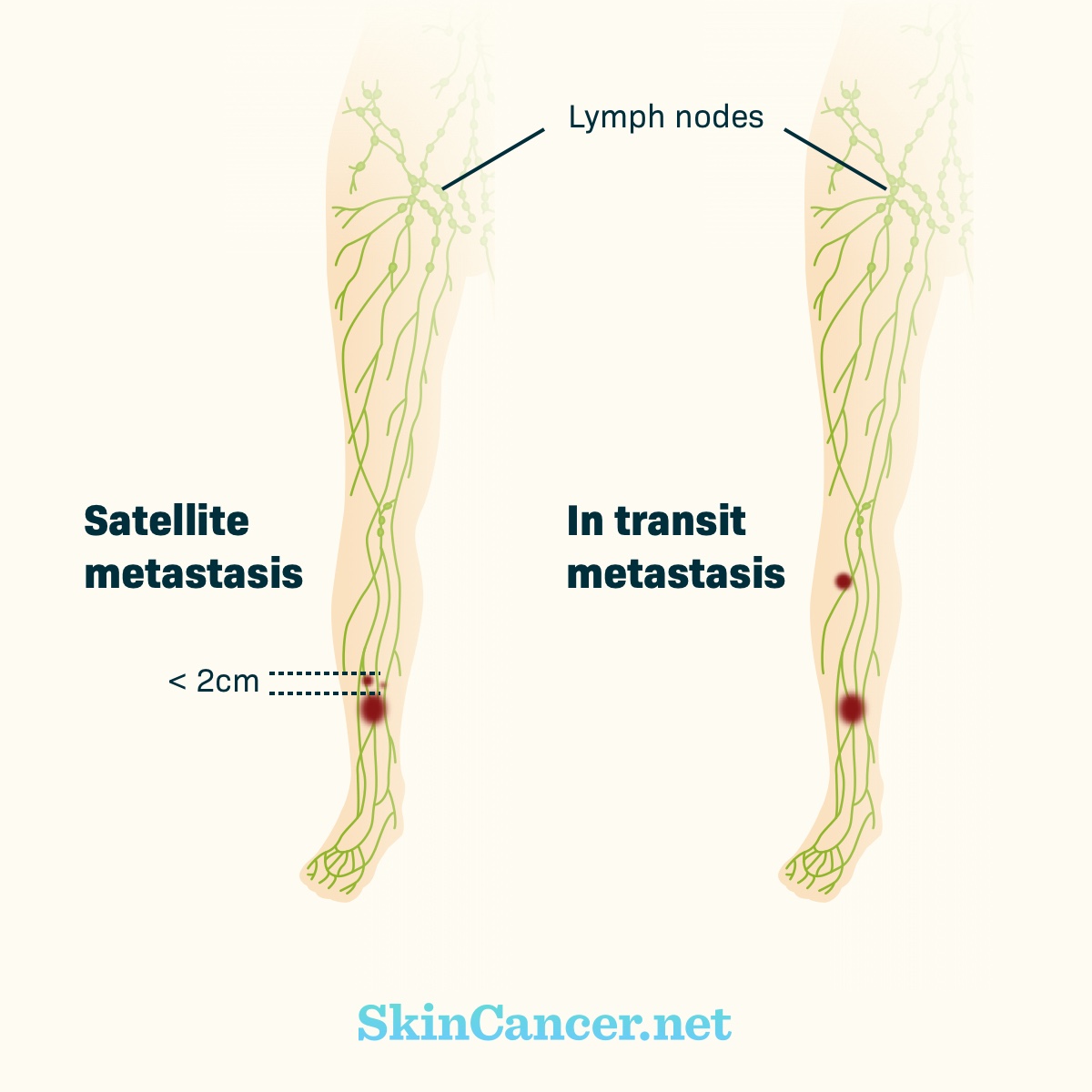Spreading to Lymph Nodes
Reviewed by: HU Medical Review Board | Last reviewed: May 2017. | Last updated: February 2023
Untreated melanoma grows downward into deeper layers of skin. It may enter the lymph vessels and spread to distant parts of the body.1 The term for the spread of cancer cells from the original skin tumor to other parts of the body is metastasis. This is when the melanoma is spreading to the lymph nodes.
What happens when melanoma spreads to the lymph nodes?
Lymph nodes are clusters of cells that filter a fluid called lymph.2 Lymph carries the white blood cells that help your body fight infection. The lymph nodes remove bacteria and other harmful substances from the lymph. During an examination for suspected melanoma, your doctor will check nearby skin and lymph nodes for signs that cancer has spread.
What is the difference between satellite metastasis and in transit metastasis?
The difference between satellite metastasis and in-transit metastasis is how far it is from the primary (original) tumor (Figure).3
- Satellite metastasis: Lesion less than 2 centimeters (cm) from primary tumor
- In-transit metastasis: Lesion more than 2 cm from primary tumor, but not past the regional lymph nodes
Figure 1. Satellite and in-transit metastasis
What are signs of satellite metastasis and in-transit metastasis?
You may be able to see or feel satellite or in-transit metastases.4 Metastases in the skin may be red or black.3 They may be as small as 0.2 cm or up to 2 cm. These lesions may look like a bump (nodular) or may be flat.3 Some ulcerate and look like open sores.5
Metastases under the skin (subcutaneous metastases) look like lumps.5 They may be blue or skin-colored. Sometimes they are painful. Often they are painless.
What are signs and symptoms of melanoma spreading to lymph nodes?
Nodal metastasis is when skin cancer spreads to lymph nodes. Swollen, hard, and enlarged lymph nodes may be a sign of nodal metastasis.6 Lymph nodes are located in the neck, underarm, and groin. Your doctor will feel your lymph nodes during the physical examination.
The absence of lymph node symptoms does not rule out the spread of cancer. It is possible that the metastasis is so small that it can only be seen under the microscope. The term for this is micrometastasis.7 If the primary tumor is more than 1 millimeter thick, your doctor might recommend a lymph node biopsy.
What are the signs and symptoms of distant metastasis?
Symptoms of distant metastatic melanoma will depend on what organs are affected. Distant metastases can grow in many locations. The most common locations and related symptoms are:8
- Lungs: shortness of breath
- Liver: jaundice or swelling of the belly
- Brain: headache and seizure
- Bones: pain and fracture
What is a lactate dehydrogenase test?
A blood test can be done to check your lactate dehydrogenase (LDH) levels.6 LDH is an enzyme found in the blood. High LDH after a melanoma tumor has been surgically removed can be a sign of metastatic cancer.9
